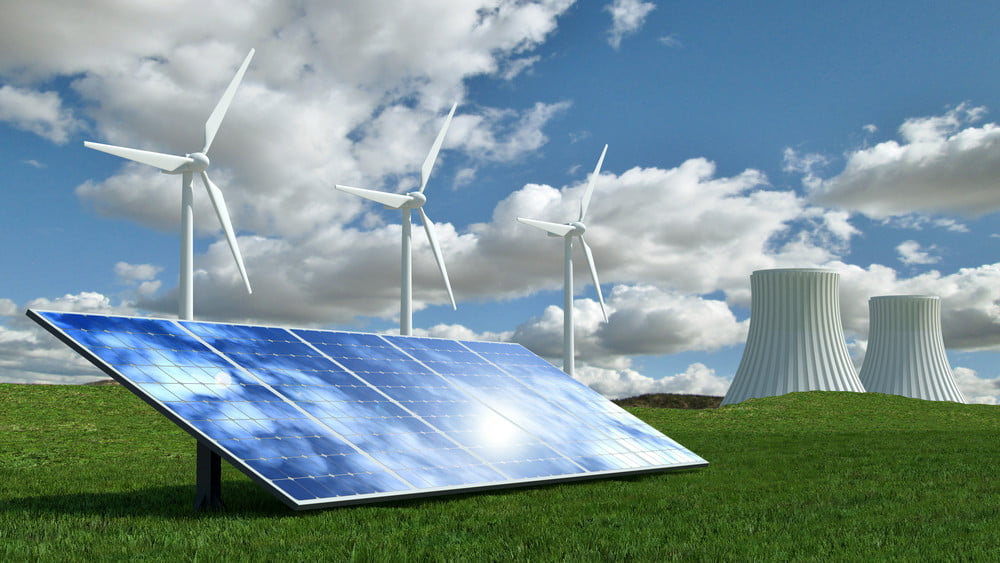In today’s world, the need for sustainable living and eco-friendly lifestyles has become more imperative than ever before. With the increasing concern about climate change and depleting natural resources, it is crucial that we explore green energy alternatives to reduce our carbon footprint and protect the environment. Fortunately, there are several innovative solutions available that can help us transition towards a greener future.
One of the most widely recognized green energy alternatives is solar power. Solar panels harness the sun’s energy and convert it into electricity. This renewable source of energy not only reduces our dependence on fossil fuels but also helps us save money in the long run by reducing our electricity bills. Installing solar panels might require an initial investment, but with government incentives and decreasing costs, it has become increasingly affordable for homeowners and businesses alike.
Another promising green energy alternative is wind power. Wind turbines generate clean electricity by harnessing the power of wind. These turbines can be installed on land or offshore in areas with strong wind currents. Wind farms have gained popularity globally as they provide a significant amount of electricity without producing harmful emissions or contributing to air pollution.
Hydropower is another well-established green energy alternative that utilizes flowing water to generate electricity. Dams are built across rivers to create reservoirs where water accumulates at a higher level than downstream. When released through turbines, this stored potential energy transforms into kinetic energy which generates electricity. Hydropower plants produce substantial amounts of renewable energy while also providing benefits like flood control, irrigation systems, and recreational activities in some cases.
Geothermal energy taps into heat stored within Earth’s crust to generate power sustainably. This form of renewable energy relies on geothermal hotspots such as underground steam or hot water reservoirs created by volcanic activity or naturally occurring hot springs found in certain regions worldwide. Geothermal power plants utilize these resources through drilling wells into these sites to extract high-pressure steam that drives turbines connected to generators—resulting in clean, reliable electricity.
Biomass energy utilizes organic matter like agricultural waste, wood pellets, or dedicated energy crops to produce heat or electricity. Biomass can be burned directly or converted into biofuels such as ethanol and biodiesel. This renewable energy source has the advantage of reducing waste while providing a sustainable alternative to fossil fuels. However, it is important to ensure that biomass is sourced responsibly and does not contribute to deforestation or food scarcity issues.
Tidal power harnesses the gravitational pull of the moon on Earth’s oceans to generate electricity. Tidal turbines are placed underwater in areas with strong tidal currents, and as the tides ebb and flow, they spin the turbines which generate clean power. While tidal power has immense potential due to its predictability, it does require specific geographical conditions for optimal efficiency.
In addition to these well-known green energy alternatives, there are also emerging technologies that hold promise for a greener future. For instance, hydrogen fuel cells have gained attention for their ability to produce electricity by combining hydrogen with oxygen from the air—leaving only water vapor as a byproduct. Fuel cells can power various applications ranging from vehicles to buildings and offer an efficient way of converting chemical energy into electrical energy without greenhouse gas emissions.
Furthermore, wave power captures the kinetic energy produced by ocean waves using floating devices that move up and down with wave motion. The movement drives generators within these devices and produces renewable electricity without consuming any fuel resources or emitting harmful pollutants.
It is essential for individuals, businesses, governments, and institutions around the world to embrace these green energy alternatives actively. Transitioning towards cleaner sources of energy will not only help combat climate change but also create new job opportunities in renewable sectors while promoting economic growth.
The widespread adoption of green technology requires supportive policies from governments worldwide—such as tax incentives or subsidies—to encourage investment in renewable infrastructure projects. Additionally, research institutions should continue exploring innovative ways to improve existing technologies and develop new ones to make them more efficient, cost-effective, and accessible to all.
As individuals, we can contribute by making sustainable choices in our daily lives. Simple actions like reducing energy consumption, recycling, using energy-efficient appliances, and supporting renewable energy initiatives can go a long way in promoting a greener future for generations to come.
In conclusion, green energy alternatives provide viable solutions to address the environmental challenges we face today. Solar power, wind power, hydropower, geothermal energy, biomass energy, tidal power—these are just some of the options available to us. By embracing these technologies and transitioning towards cleaner sources of energy on a global scale with supportive policies and individual action alike—we can create a more sustainable world for future generations while mitigating the impacts of climate change. Let us take this opportunity to shape a greener future together.

Leave a comment